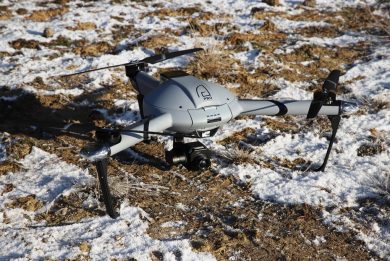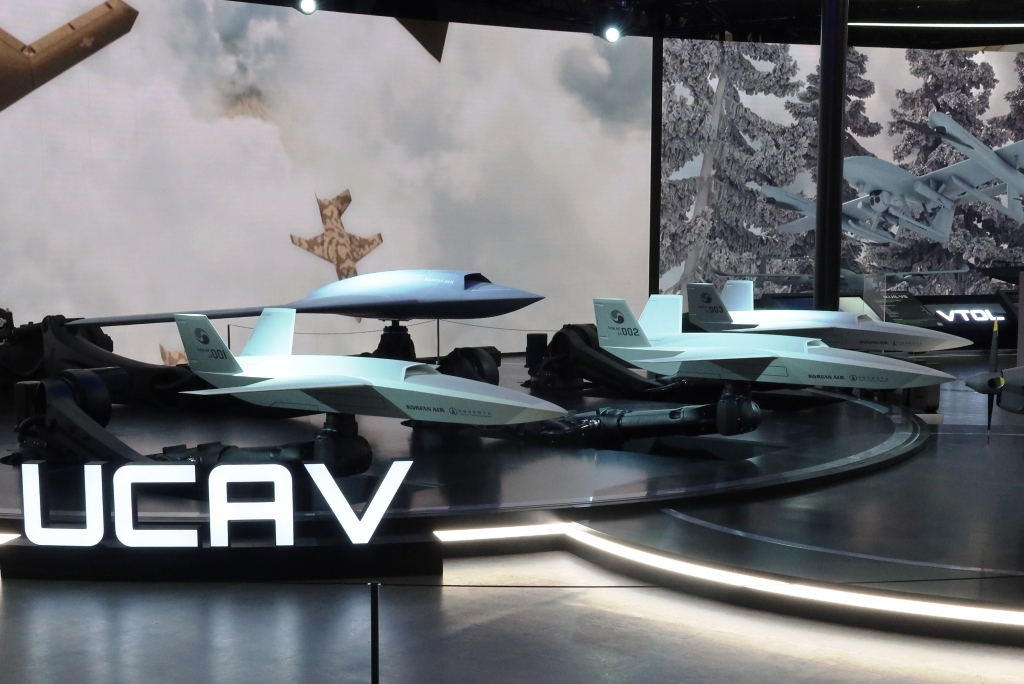
ADEX 2023 – Korean Air exhibits its developmental UAVs
At ADEX 2023 the national UAV champion, Korean Air, exhibited the whole portfolio of airframes currently under development, ranging from UCAVs, to MAE, to VTOL
With its KUS-FS Medium-Altitude UAV, the 25 metres wingspan turboprop airframe visible at ADEX static display along the runway, the inside Korean Air booth was mostly dedicated to ongoing developments.
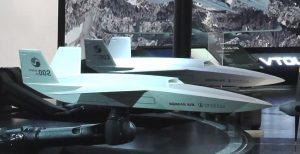
Stealth UCAVs were shown, two different types being under development. In cooperation with the Korean Agency for Defence Development (ADD) Korean Air is currently undergoing the technology research, both systems being considered at TRL 4-5. The KUS-LW has a conventional architecture, with mid-wing and V-shaped tailplane. It is 10.6 metres long, has a wingspan of 8.4 metres and is 3 metres high, its powerplant being based on a turbofan engine which output was not provided, the same being true for the maximum take-off mass. The same applies to flight performances. According to company sources a scaled down model should be available in 2024, the first flight of the full prototype being expected for 2026. Capable to fly in manned-unmanned formations, it will pack considerable autonomy capabilities and will be used for different missions such as intelligence surveillance and reconnaissance, strike, escort and electronic warfare.
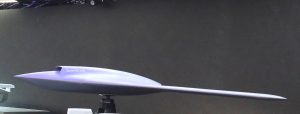
The bigger UCAV, the KUS-FC, is essentially a reconnaissance asset capable to fly over enemy territory thanks to its very low visibility. A tailless configuration, it is12 metres long, has a 20 metres wingspan and is 3 metres high. Here too performances were not discussed. Here too scaled down aircraft, 7 metres long according to the company, will be developed, first demonstration aircraft being expected in 2027.
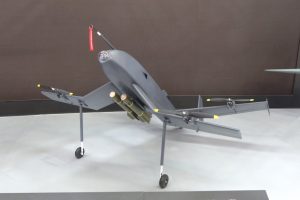
Coming t attack UAVs, the KUS-VX is a vertical take-off and landing (VTOL) airframe with a quite peculiar architecture. Its inverted tricycle landing gear features unusually high front legs while the rear wheel is attached to the tail, giving the wings a nearly 40° angle of incidence at take-off. The inverted seagull wing (Stuka-like . . . ) is fitted with one two-blade pulling propeller per side, two more being attached to the rear horizontal empennage, a double vertical tailplane providing stability. No indication of the powerplant were provided, cruise speed being 270 km/h. Once its propellers take it into the air the KUS-VX converts to horizontal flight, wings taking over the lift-generating role, propellers being now used only for maintaining speed. The maximum take off mass is 700 kg, 130 kg being the payload. This includes the day/night optronic suite with thermal camera, and two Hellfire missiles. It can fly at an altitude up to 5,000 metres and its range is 600 km. The KUS-VX is in the development phase, no date for a first flight being provided.
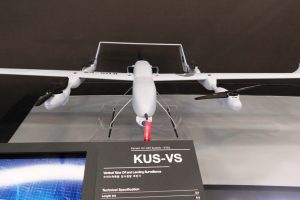
Another VTOL system, the KUS-VS, has already flown and is in a much more advanced development status. A more conventional design, with high wing and twin-boom tailplane with two vertical planes and high stabilator, it is powered by a 38 hp engine while two rotors per side installed on the booms, one in front and one behind the wing, provide the vertical lit at take-off and landing, these operations being carried auto in full automatic mode. Maximum speed is 170 km/h while cruise speed is 140 km/h. The KUS-VS is 3.4 metres long, has a 5.6 metres wingspan and a maximum take-off mass of 150 kg, and is mostly used for reconnaissance missions, declared range being 80 km while endurance is 6 hours.
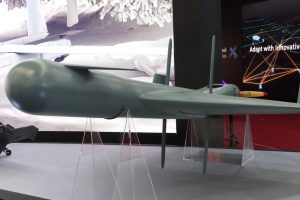
Another development item seen at ADEX was the KUS-SX suicide drone. With a long fuselage which diameter increases at the front, it has a canard configuration with two long and narrow vertical fins just behind the wing, it is powered by a two-stroke engine that activates a two-blade pushing propeller. Its wingspan is 1.6 metres and its maximum take-off mass is 25 kg. Its modular design allows it to be fitted for different missions. In the reconnaissance role it can host an electronic warfare or an optronic suite, while in the attack role these will be replaced by the warhead, which EDR On-Line understood is still being developed. No in-service date was provided.
Photos by P. Valpolini

